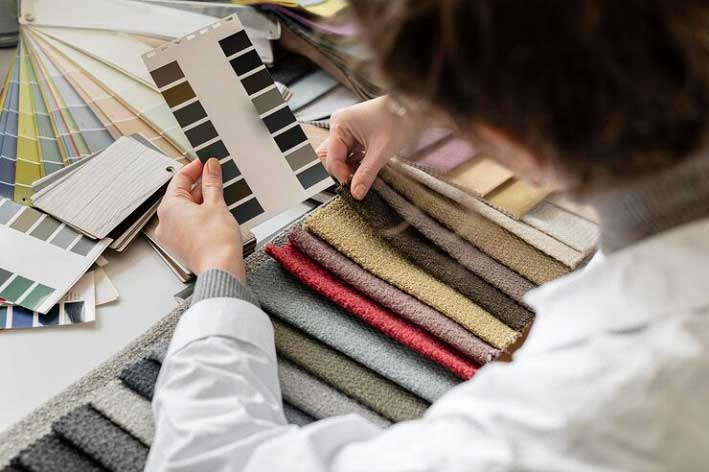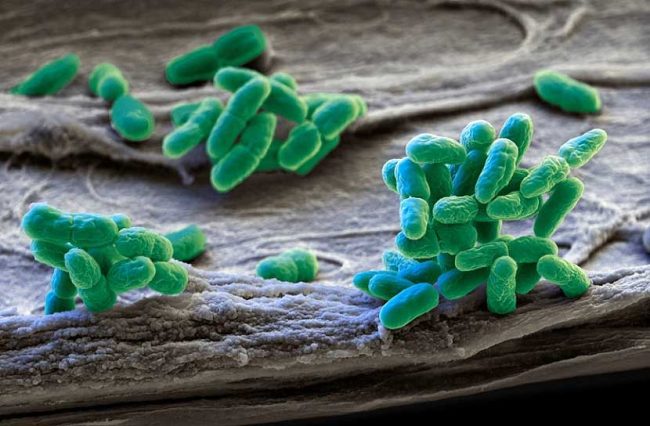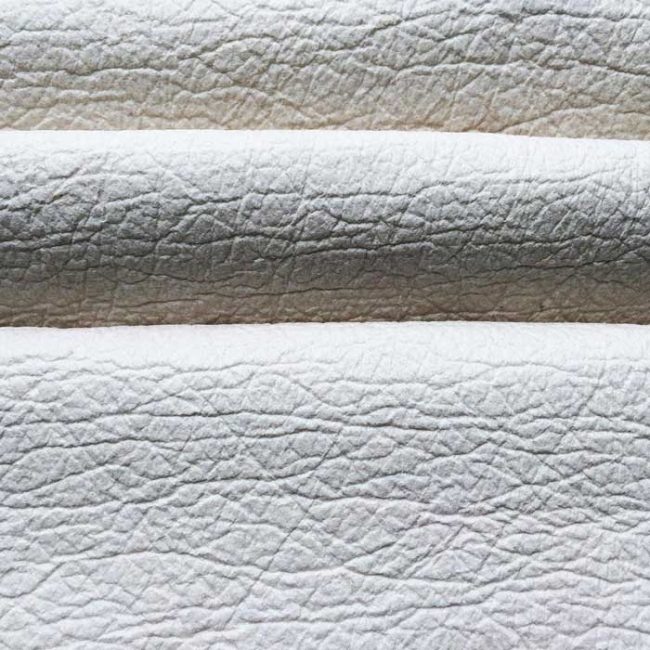
Material matters: A deep dive into textile selection for fashion designers
As Designers, our choices in material selection can play a very crucial role in ensuring the
safety and security of generations to come, informs Nandita Shetty.
Let’s take a moment to glance below at our bodies, and take a good look, at all the cloth that has us covered.
We are bound to see, for a huge part of it, to be fabrics and fibres – man made, natural, lab-blended – either woven, felted, or knitted, into silhouettes and drapes crafted for the modern efficient beings we are today.
We have all had our moments of pulling out a linen shirt/trouser or a taffeta blouse, seeing the creases formed on it, because of the nature of these fabrics and taking our time out to iron them away or alternatively to pull out a sleek polyester shirt, a variation of a kind that won’t crinkle on you, no matter what – the kind that saves your time to iron the cloth and saves the day.
We live in a time and age of hyper productivity aided with technology, surrounded by a myriad of options to cover our bodies with. Accessible. Easy to wear. Affordable.
We live surrounded by cloth.
For our needs of warmth & protection, to demarcate our status, to build and project our identities, for personal decoration, or for some of us, like me, to provide an outlet for creative expression and talent.
Fashion, to me, has been the most wholesome form of self-exploration and artistic expression. I grew up with a very heavy influence of rock and hip-hop music on me. Thanks to the introduction of Vh1 in Indian television, when I was 10 years old. I was always intrigued by the clothing in the music videos and by the age of 13, I would try to wear everything that made me feel closer to the music. Which was when I felt and believed that I had finally found a form of expression, that to me was so wholesome, it combined the best ways of speaking without having to utter any words. It is your second skin that speaks for you.
My education & my work experience with the Indian fashion & textile industry has helped me shape my ability to express and translate my views onto a material or onto a form that can be worn and can help an individual in letting the world know a little better about themselves, or in contrast, make them feel a way about themselves that they did not know they could.
Let’s take a closer look at the fabrics that you surround and clothe yourself with, each day. And some other fabrics and materials, that may be a peek into what could potentially be in store for our coming generations to wear, as more Earth conscious replacements.
Material history
One of the most widely known fabrics, to all, has been – cotton. Cotton was a common crop throughout Africa. The great Andalusian Arab traveller Al Bakri, who visited Mali as early as 1068, wrote that ‘Every house had its cotton bush…and cloths of fine cotton’ …were traded by locals for salt, millet, fish, butter, indigo and meat.
The earliest fabrics that we know were made by human hand were created using fibres gleaned from flax plants over 34,000 years ago. Transfiguring flax, wool, cotton, silk, hemp or ramie into thread was a technological feat, requiring skills and tools – spindles and distaffs – many millions of which have been excavated from the world’s oldest archaeological sites. These threads could then be used to create rope, nets – and when woven together on looms, felted or knitted – textiles. Such technologies allowed our early ancestors to gather food more quickly, transport it over greater distances and more easily and venture further afield to less temperate regions to seek out new habitats.
Over the course of a century, the Spinning Jenny, the Water Frame and the Power Loom and a host of other inventions exponentially increased the rates of production.
Mankind and civilisation have come a far way since then.
Today, we have a plethora of techniques, technologies, ways and means of sculpting and formulating a range of different fabrics and materials to suit our tastes, fantasies and for our need for better protection from elements of nature.
More recently we have plant-based alternatives such as pineapple leather, seaweed, banana fibre, corn fibre, mushroom leather, orange leather, apple leather, etc.
Material innovation

Algae-based textile: Over the past few years, different companies, like Algaeing, have been revolutionising the fashion industry by developing fabrics and dyes made from algae. Algaeing works with another company, Algatech, which grows algae using vertical farming, meaning that algae are grown indoors in vertical stacks using solar energy and seawater. Algaeing is then able to convert algae into a liquid that can be used as a textile dye. By adding cellulose to the liquid, the company is also able to create fibres for the textile industry. London based BioCouture is a similar organisation concocting its own solutions with yeast and bacteria.

Chitin fibre: Chitin Fibre is derived from food waste, predominately from crustaceans shell. It’s cheap and versatile, incorporating waste from the food industry. It’s already being used for a large variety of manufacturing processes and can decrease the use of artificial dyes due to its bonding property. The production process is energy efficient and free of hazardous chemicals. We also need 80 per cent less water to produce algae-based fibres compared to the production of cotton. A few brands using algae in their products are Hylo Athletics, Dr. Scholl’s Shoes and Pangaia.

Pineapple: Piñatex is a registered company which produces an innovative natural textile made from pineapple which resembles leather and fabric. The pineapple leaf fibres used to create Piñayarn are an agricultural waste product, which means that no extra land, water or pesticides are required to produce the raw material.

Nano Technology: Nanotechnology in the clothing industry is not a new phenomenon. Beginning in the mid-2000s, many clothing companies started incorporating silver nanoparticles into their products. Silver nanoparticles are antimicrobial, which means they kill the bacteria that cause bad odours. By including these nanoparticles in fabric to prevent odour, the resulting clothes need to be washed less frequently.
Future projections
Planet friendly, bio-based and sympathetic to animals, is the way forward.
Material Innovation Org. Napa, California: “We believe that consumers do not buy materials because they come from animals or petrochemicals; they buy them based on their performance, aesthetic, price, and availability. If the market provides consumers with products that meet these needs, plus have the added benefits of being more sustainable and animal-free, consumers will purchase these products. Until we create sustainable and humane “next-gen” materials that outperform and replace current animal-based and unsustainable materials at sufficient scale, the earth will continue to be exploited with tremendous ethical and environmental consequences.”
Radiant Matter. Hayes, United Kingdom: Sequins are small disks of petroleum based plastic, using either a synthetic coating or metallic foil for the shimmering effect. They are widely used within all sectors of fashion, textiles and consumer goods, and have a long cultural relevance dating back to the Egyptian times. Due to their size, they are classified as a micro plastic and contribute to the growing global plastic problem. Sequins, like glitter, also leak into our environment, causing problems to human and planetary health.
Radiant Matter is a material innovation company specialising in the development of naturally sparkling, iridescent, and sustainable materials, founded in 2020 by Elissa Brunato. The aim was to develop a new generation of shiny, colourful materials that lessen the industry’s reliance on petroleum and mining for minerals by providing a solution for traditional metal-coated plastic sequins. After all, in the UK, around 33 million sequined garments are bought during the festive season alone, and around 1.7 million of those end up in landfill after just five years.
Claiming our oneness with nature
Indigenous communities the world over have long been harnessing their natural surroundings to create wearable materials with deep cultural and ceremonial significance.
For instance, banana silk yarn has been woven and used for centuries by the aboriginal Kavalan tribe in Taiwan—a technique that has been passed down through generations. As per Kavalan folklore, bananas were chosen for their abundance and year-round availability. Meanwhile, the Khmu—the Indigenous inhabitants of northern Laos—have long been crafting hand-knotted bags using a locally sourced liana vine. The vine is typically collected post-rainy season, and transformed into raffia-like fibers, which are then hand-knotted into thread. And Muka—the processed fiber from New Zealand flax—is a crucial component in traditional Māori textiles. It is typically prepared through scraping and washing, and was the primary material for crafting clothing through tāniko, or twined weaving, in pre-colonial times.
Today, the respectful, regenerative, and resource-efficient practices of indigenous peoples serve as a valuable source of inspiration for wider efforts to develop and scale non-polluting biomaterials across the fashion industry.
Conscious directions
We are, at a crucial crossroads.
Every year, roughly 700 million barrels of oil are converted into plastic pellets, melted and extruded into fine filaments that can be spun into synthetic yarns like polyester, as per a report of International Energy Agency.
Meanwhile, wardrobes are increasingly full of synthetic clothes are responsible for leaching microplastics into waterways and food systems with every wash. Accumulations of these tiny plastic particles have been detected in breast milk and human organs. According to a study published recently, even clouds contain plastic now. To top it off, 99 per cent of the time, the final destination for all this accumulated clothing is landfill, where polyester can survive for hundreds of years, slowly releasing toxins into the soil. Today, polyester is the world’s most widely used fibre, accounting for 54 per cent of the total market in 2021, according to data from sustainable materials focused trade group Textile Exchange.
Breaking the industry’s fixation on fossil fuels is the focus of a new campaign launched by a coalition of 15 environmental groups during Climate Week in New York last month. Avoiding catastrophic climate change “requires rapid, deep and immediate cuts [to greenhouse gas emissions] this decade,” said Livia Firth, the Co-founder and creative director of Eco-Age, the sustainability consultancy and advocacy group spearheading the campaign, during it’s launch in New York last month. “How on Earth do we do that when we’re all wearing oil?”
And like most crossroads that people walk on, we are left with a clear choice of path for our future. As Designers, our choices in material selection can play a very crucial role in ensuring the safety and security of generations to come. The lure of speed & accessibility versus the need & urgency of a safer and cleaner world, are both available paths in an atelier.
References:
⦁ https://www.businessoffashion.com/news/sustainability/eu-wants-all-textile-waste-regulations-ready-by-2028/
⦁ The Golden Thread by Kassia St. Clair, p.8, 161, 175.
⦁ https://sustainable-nano.com/2013/08/06/silver-for-your-smelly-socks/
⦁ https://www.forbes.com/sites/forbesstylefile/2014/05/07/what-is-the-future-of-fabric-these-smart-textiles-will-blow-your-mind/?sh=357e64df599b
⦁ https://materialinnovation.org/
⦁ https://www.radiantmatter.co/
⦁ https://circularsystems.com/
About the author:

Nandita Shetty is a Mumbai based Multidisciplinary Designer. Her areas of work range from various subfields of design and art such as apparel design, bag design, surface texture, print development, lifestyle accessories design, graphic design and digital art. She has worked with a diverse set of companies and clients, catering to both, local and international fashion. Her approach towards design is primarily eclectic, having empathy as the foundation to all of her work, while delivering designs that have a sense of novelty at it’s core.



